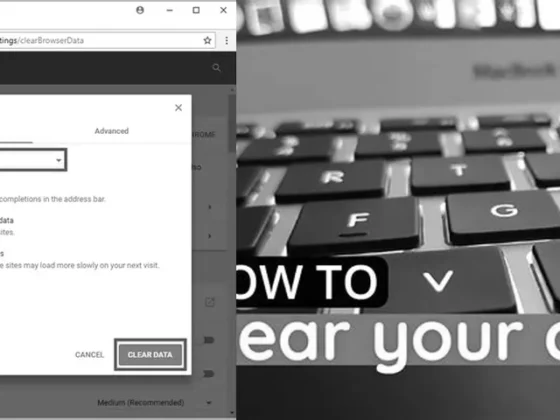Why Can’t I Get the Newest Version of Chrome? Troubleshooting Update Issues and Consequences of Outdated Chrome – Are you tired of seeing that annoying “Update Chrome” notification pop up on your screen, only to find out that you can’t get the newest version? Well, you’re not alone! In this blog post, we will dive into the world of troubleshooting Chrome update issues and explore why you might be missing out on the latest and greatest features. From updating Chrome on Android devices to the consequences of using an outdated version, we’ve got you covered. So, grab a cup of coffee and get ready to unravel the mysteries of Chrome updates. Let’s get started!
Troubleshooting Chrome Update Issues
Google Chrome is widely regarded as a fast, efficient, and user-friendly web browser. However, users can sometimes encounter issues when trying to update to the newest version. If you’re struggling with this, you’re not alone. This guide will walk you through the possible reasons and solutions.
Check Your Security Software Settings
Security software, such as antivirus, firewall, or parental control applications, can sometimes interfere with Chrome’s ability to update. These programs are designed to protect your computer from harmful content, but they can occasionally block legitimate processes by mistake.
- Antivirus Settings: Verify that your antivirus isn’t interfering with Chrome by looking into its settings. Ensure it’s not blocking Chrome’s update process.
- Firewall Settings: Similarly, check your firewall settings to make sure that it’s not preventing Chrome from accessing the internet.
- Parental Control Software: If you have parental controls active, make sure they aren’t restricting Chrome’s ability to navigate to update servers.
Ensure Update Servers Are Accessible
For Chrome to update, it needs to communicate with specific Google servers. If these are blocked, updates can’t occur.
- Ensure that tools.google.com and dl.google.com are not blocked by your network settings or hosts file.
Managing Extensions
Browser extensions enhance the functionality of Chrome but can sometimes cause performance issues or interfere with updates.
- Review your installed extensions by accessing Chrome’s Extensions page (chrome://extensions/) and remove any that you don’t use or recognize.
Reinstalling Chrome
If Chrome still refuses to update, a fresh installation might be necessary.
- Uninstall Chrome from your device.
- Visit the official Google Chrome site to download and install the latest version.
Forcing a Chrome Update
Sometimes, an update may already be downloaded but awaits completion. Force an update using these steps:
- Open Chrome and click on More (three dots) at the top right.
- If there’s an update, you’ll see options to relaunch or finish the update.
Checking for New Version Prompts
Chrome typically alerts you when an update is available. Look for prompts like “Relaunch to update”, “Finish update”, or “New Chrome available”.
Updating Chrome on Android Devices
Updating Chrome on an Android device is a straightforward process:
- Open the Play Store app.
- Tap on the profile icon at the top right corner.
- Select “Manage apps & device”.
- Find Chrome under “Updates available”.
- Tap on Chrome, then tap “Update”.
Consequences of Outdated Chrome
Running an outdated version of Chrome can pose security risks and lead to a suboptimal browsing experience.
- If Chrome is out of date, it will either prompt you to check for updates or run them automatically, based on your settings.
- After checking for updates, Chrome will install them and may require a relaunch.
When Chrome Stops Working
There are cases where Chrome may not launch at all. This can be due to interference from antivirus software or the presence of malware.
- Check if Chrome is being blocked by your antivirus or other software on your computer.
- Remove any problematic programs and prevent similar ones from being installed in the future.
Antivirus Interference
Investigate whether your antivirus program is causing issues by temporarily disabling it and attempting to open Chrome. If Chrome opens without the antivirus running, you may need to configure your antivirus settings to exclude Chrome from its restrictions.
Malware Check
Malware can prevent Chrome from opening or functioning correctly. Running a malware scan with a trusted security program can identify and remove any malicious software that might be causing problems.
Final Thoughts
Keeping Chrome up to date is crucial for security and performance. If you encounter issues updating Chrome, the steps outlined here should help you troubleshoot and resolve the problem. Remember to maintain good security practices, such as running regular malware scans and ensuring your security software is not blocking important updates. With these measures in place, you can enjoy a safe and efficient browsing experience on the latest version of Google Chrome.
FAQ & Related Questions about Why Can’t I Get The Newest Version Of Chrome?
Q: How do I get the latest version of Chrome?
A: To get the latest version of Chrome, open the Play Store app on your Android device, tap the profile icon, go to “Manage apps & device,” find Chrome under “Updates available,” and tap Update.
Q: What is the latest version of Chrome OS 2023?
A: The latest version of Chrome OS 2023 is ChromeOS 109 Desktop.
Q: Should I update to the latest Chrome version?
A: Yes, you should update to the latest Chrome version as it improves speed and performance. It also ensures that you have the latest security features and fixes.
Q: How can I check if my version of Chrome is out of date?
A: To check if your version of Chrome is out of date, open Google Chrome, click the three dots icon on the top right, and click “Update Google Chrome.” If you don’t see this button, it means you are already on the latest version.
Q: What happens when Chrome is out of date?
A: When Chrome is out of date, it will either provide you with a button to check for updates or run them automatically, depending on your settings. After checking for updates, it will automatically install them and provide a button to relaunch. Make sure to check the settings for your antivirus, firewall, or parental control software, and ensure that software updates are not blocked from going online. Also, ensure that tools.google.com and dl.google.com are not blocked.


